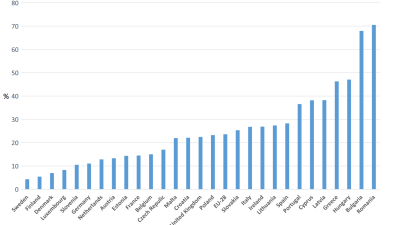Real progress was made by the New Labour governments of 1997–2010 in tackling social exclusion, according to a new report. But it also argues that weaknesses in the strategy have been exposed by austerity conditions since the global crisis of 2008.
Key points
- New Labour's approach led to successful welfare-to-work schemes, more children in early years education and dramatic progress on homelessness, as well as paving the way for later personalisation in public services.
- But the social exclusion agenda relied too heavily on large, unsustainable investments such as the £1.7 billion spent on the New Deal for Communities. And although unprecedented levels of funding went into tackling drug addiction, homelessness and other forms of exclusion, the intensive support needed to recover from these problems was often lacking.
- Disadvantaged groups continued to be excluded from the decision-making processes that shaped their lives, including their care, how services were delivered, and public and political forums.
- New Labour never got much public recognition for its efforts. The narrative of a small, dysfunctional minority – the '2.5 per cent' marooned from the rest of society – failed to build common ground with majority concerns.
- The coalition’s 'social justice' strategy also focuses on a narrow group facing entrenched social disadvantage and poverty. The lesson under New Labour is that this will at best lead to a settlement for the most disadvantaged that is residualised and unstable.
- A more enduring solution to social disadvantage will require a broad programme for social renewal, including more responsive public services and action on pervasive inequalities in the employment and housing markets.
Source: Clare McNeil, The Politics of Disadvantage: New Labour, Social Exclusion and Post-Crash Britain, LankellyChase Foundation
Links: Report | LCF press release



 PSE:UK is a major collaboration between the University of Bristol, Heriot-Watt University, The Open University, Queen's University Belfast, University of Glasgow and the University of York working with the National Centre for Social Research and the Northern Ireland Statistics and Research Agency. ESRC Grant RES-060-25-0052.
PSE:UK is a major collaboration between the University of Bristol, Heriot-Watt University, The Open University, Queen's University Belfast, University of Glasgow and the University of York working with the National Centre for Social Research and the Northern Ireland Statistics and Research Agency. ESRC Grant RES-060-25-0052.






